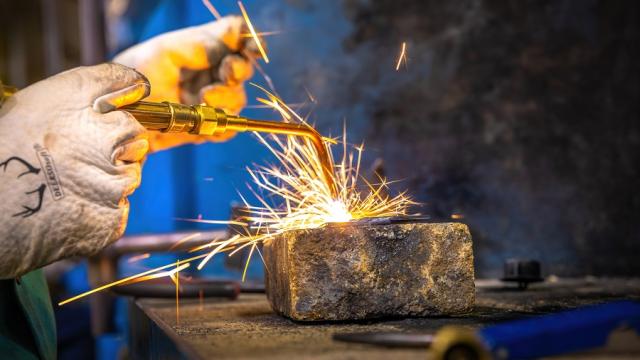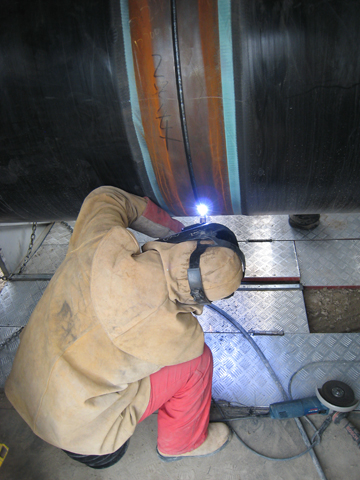Common Welding Fixing Issues and Exactly How to Address Them Properly
Welding repairs often run into a series of problems that can endanger the stability of the end product. Common problems include poor infiltration, porosity, and imbalance, to name a few. Each issue offers distinct obstacles that require certain strategies for resolution. Comprehending these issues is necessary for welders intending to enhance their end results and abilities. This discussion will discover these common welding fixing problems and efficient techniques to address them.
Poor Penetration
Poor penetration occurs when the weld steel fails to fully fuse with the base product, resulting in weak joints and prospective structural failures. This problem commonly originates from insufficient warm input, wrong electrode angle, or inappropriate welding speed. Welders might experience inadequate infiltration as a result of a miscalculation of the required parameters for a particular product thickness or kind. Furthermore, contamination on the base product's surface can prevent effective bonding, aggravating the trouble. To resolve inadequate infiltration, welders must ensure suitable setups on their tools and preserve a tidy work surface. Regular inspection of welds is recommended to recognize any type of deficiencies early, permitting prompt corrections and the avoidance of endangered architectural honesty in bonded settings up.
Porosity
Porosity is a common flaw in bonded joints that materializes as small gas bubbles entraped within the weld metal. This defect can compromise the stability of the weld, bring about decreased stamina and prospective failing under stress. Welding. Porosity normally emerges from contamination, dampness, or improper welding strategies, which permit gases to get away into the liquified weld pool. To attend to porosity, welders should ensure proper surface prep work, maintain a tidy working atmosphere, and make use of suitable welding parameters. In addition, selecting the right filler material and shielding gas can reduce gas entrapment. Regular evaluation and screening of welds can assist recognize porosity early, assuring prompt rehabilitative activities are taken, therefore maintaining the quality and reliability of the welded structure
Imbalance
Misalignment in welding can occur from various variables, consisting of improper configuration and thermal development. Comprehending the root causes is vital for effective resolution. Numerous correction strategies are available to straighten elements and guarantee architectural integrity.
Root causes of Misalignment
Welding misalignment typically comes from a variety of underlying problems that can compromise architectural integrity. One main reason is inappropriate fit-up of components prior to welding, which can cause voids and unequal surfaces. Variants in thermal expansion during the welding process can also lead to distortion, specifically if the products being joined have various coefficients of expansion. In addition, poor fixturing and securing may fail to hold components securely in location, resulting in motion during welding. Badly maintained equipment, including welding equipments and devices, may present disparities in the weld bead, more adding to misalignment. Operator error, stemming from not enough training or experience, can likewise play a substantial duty in developing misaligned welds.

Improvement Methods Readily Available
Addressing imbalance effectively requires a mix of restorative methods customized to the details issues handy. One common approach is using jigs or fixtures to hold elements in the appropriate position throughout welding, making sure constant positioning. In addition, pre-heating the materials can aid lower distortion and improve fit-up. For considerable imbalance, mechanical realignment strategies, such as utilizing hydraulic jacks or clamps, can be utilized to correct the placement prior to welding. Post-weld warmth treatment may also be needed to ease stress and anxieties triggered by misalignment. Ultimately, cautious assessment and change during the setup phase can protect against imbalance problems from becoming significant troubles, advertising a smoother welding process and improving total architectural stability.
Distortion
Distortion is a common challenge in welding that can develop from various elements, including unequal heating & cooling. Comprehending the reasons of distortion is necessary for implementing efficient avoidance strategies. Resolving this problem not only improves architectural integrity however likewise improves the general high quality of the weld.
Root causes of Distortion
When subjected to the extreme heat of welding, products often undergo modifications that can result in distortion. This phenomenon primarily emerges from thermal expansion and tightening during the welding process. As the weld location warms up, the material broadens; upon cooling, it contracts, which can create inner tensions. Additionally, unequal home heating across a workpiece can aggravate these anxieties, leading to warping or bending. The kind of product likewise plays a significant role; steels with differing thermal conductivity and coefficients of development may respond differently, resulting in unforeseeable distortions. Inadequate joint layout and insufficient fixturing can read this add to misalignment during welding, enhancing the probability of distortion. Understanding these reasons is important for efficient welding repair work and prevention approaches.
Avoidance Techniques
Reliable prevention strategies for distortion throughout welding focus on managing warm input and making certain appropriate joint style. Preserving a constant warmth input aids to minimize thermal growth and tightening, which can cause distortion. Using methods such as pre-heating the workpiece can additionally minimize the temperature gradient, advertising uniform heating. Furthermore, choosing suitable joint styles, such as T-joints or lap joints, can enhance stability and reduce anxiety focus. Carrying out correct fixturing to secure the workpieces in position better aids in maintaining placement throughout the welding procedure. Staggered welding series can distribute warm extra equally, stopping local distortion. By applying these strategies, welders can substantially reduce the probability of distortion and improve the total high quality of their welds.
Breaking
Fracturing is an usual issue run into in welding repairs, commonly arising from various factors such as improper air conditioning rates, product option, or inadequate joint prep work. The occurrence of fractures can substantially compromise the integrity of the weld, resulting in possible failures during operation. To address this problem, welders must first examine the root causes, making sure that products are suitable and suitably chosen for the details application. Additionally, regulating the air conditioning rate during the welding process is necessary; read what he said rapid cooling can cause stress and anxiety and lead to fracturing. Proper joint layout and prep work additionally contribute to minimizing the danger. Executing these techniques can enhance weld high quality and toughness, ultimately minimizing the probability of cracking in finished weldments.

Insufficient Combination
A substantial problem in welding fixings is insufficient fusion, which takes place when the weld metal does not properly bond with the base product or previous weld passes - Fabrication. This defect can bring about weak points in the joint, potentially jeopardizing the stability of the bonded framework. Aspects adding to insufficient combination consist of inadequate warm input, improper welding strategy, and contamination of the surfaces being signed up with. To resolve this concern effectively, welders must guarantee correct pre-weld cleaning and surface area prep work, in addition to adjust their welding parameters to accomplish sufficient infiltration and combination. Normal examination throughout the welding process can likewise help recognize incomplete combination early, enabling for timely corrective procedures to enhance the overall top quality of the weld
Overheating
While welding repair services can improve structural stability, overheating offers a considerable difficulty that can cause product degradation. Extreme heat during welding can modify the mechanical residential or commercial properties of metals, leading to lowered toughness, raised brittleness, and bending. This phenomenon is particularly crucial go to this website in high-stress applications where architectural dependability is vital. Identifying getting too hot can involve aesthetic evaluations for discoloration or distortion, as well as keeping an eye on temperature during the welding process. To alleviate the dangers connected with getting too hot, welders should use appropriate techniques, such as regulating heat input, changing travel rate, and utilizing suitable filler products. Additionally, implementing pre- and post-weld warm treatments can help bring back material properties and enhance the total quality of the fixing, making certain lasting efficiency and security.
Regularly Asked Inquiries
What Are the Usual Indications of a Welding Issue?

Exactly How Can I Test My Welds for Quality?
To test welds for high quality, one can make use of aesthetic assessments, ultrasonic testing, and radiographic methods. Each method ensures structural integrity, recognizes defects, and confirms adherence to defined criteria, ultimately boosting the dependability of the bonded joints.
What Safety and security Precautions Should I Take While Welding?
When welding, one need to prioritize safety and security by putting on appropriate individual protective tools, making sure appropriate air flow, protecting combustible materials away, preserving a clean work space, and being mindful of environments to stop injuries and mishaps.
Can I Repair a Weld Without Redoing the Entire Joint?
Repairing a weld without renovating the whole joint is possible, relying on the damage (Montana Mobile Welding and Repair Welding). Strategies such as grinding, adding filler material, or using a welding process can successfully deal with details problems while protecting the surrounding structure
What Equipment Are Essential for Reliable Welding Fixes?
Necessary tools for effective welding repair services include a welding equipment, wire brush, grinder, safety gear, clamps, and filler materials. Each device plays a crucial function in making certain high quality and safety during the repair procedure. Porosity commonly arises from contamination, wetness, or incorrect welding strategies, which allow gases to escape right into the liquified weld swimming pool. Badly kept devices, including welding machines and devices, may introduce inconsistencies in the weld bead, additional contributing to misalignment. When subjected to the extreme heat of welding, materials frequently go through modifications that can lead to distortion. Breaking is an usual concern run into in welding repair services, often resulting from numerous factors such as inappropriate cooling prices, product selection, or inadequate joint preparation. A substantial problem in welding repairs is insufficient fusion, which happens when the weld metal does not properly bond with the base material or previous weld passes.